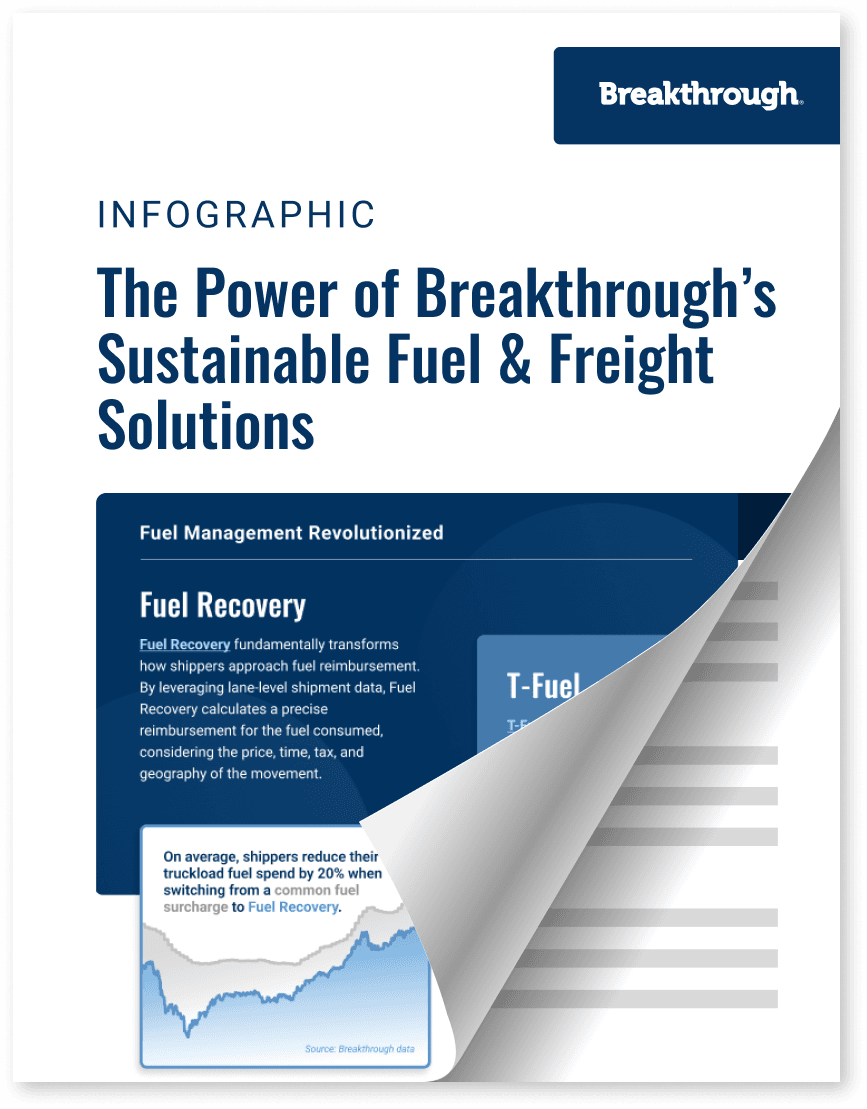The Power of Breakthrough's Sustainable Fuel and Freight Solutions

Freight
3 min read
July 17, 2024
Market Events
4 min read
July 16, 2024
Market Events
3 min read
July 8, 2024

5 min read
February 23, 2021

Share:
As truck capacity tightens amid an enduring COVID-19 pandemic and heightened freight demand, linehaul rates have surged causing significant disruption in shippers’ annual plans. When capacity supply and demand become imbalanced, the shipping community tends to look at key indicators to create expectations around an outlook. One common trend that transportation professionals tend to watch is Class 8 Truck Orders.
Truck orders represent the number of trucks a company is committing to purchase in the months ahead. Truck sales, however, show the actual quantity of trucks these companies take delivery for. Both orders and sales data are great variables to keep tabs on to understand how much capacity is coming onto the market, and when it becomes available.
Additionally, truck orders reflect how confident fleets are in the current freight market. If fleets are ordering more trucks, they likely anticipate a continued need to expand their fleet capacity and feel comfortable replacing older trucks with newer, more efficient equipment. Additionally, with the help of the backlog-to-build ratio—the time it takes from when an order is placed to delivery of the finished vehicle—we can understand the timing that more assets will hit the market. Both reasons guide shippers on what to expect moving forward.
Truck orders, truck sales, and the backlog-to-build ratio was maybe the most important variable in 2018 capacity challenges, which was the last time the market saw profound capacity tightness. The U.S. economy grew exponentially with the help of the Tax Cuts and Jobs Act. As a result, so did the demand for goods and therefore, the need to build capacity to keep up with demand.
To combat high freight demand, fleets took steps to build capacity to keep up. Class 8 truck orders illustrated this, hitting an all-time-high for orders. The chart below highlights the 5-year range of truck orders leading up to 2018. The blue line represents the 2018 orders which set a record that year.

The sustained ordering behavior, however, caused a significant backlog for the OEMs (original equipment manufacturers) causing a delay in delivering these assets. The backlog-to-build ratio surpassed levels it has ever seen before, jumping to a 13 months lag. This meant fleets had to wait a full year before receiving the trucks that they ordered. As we entered 2019, freight demand growth slowed while fleets received their new trucks. This caused the market imbalance to flip from overdemand to oversupply.

The fourth quarter of 2020 is the start of the next historic climb in truck orders. In November, orders hit their 3rd highest value ever, followed by their 4th highest in December. A key contributor to this is robust freight demand as consumers shifted spending from services to goods throughout the pandemic.
Interested in consumer purchasing patterns through the pandemic, and how this has influenced the freight market? Read more on our blog.
However, some of the orders may be due to the historically low orders at the beginning of 2020. The uncertainty of the pandemic, the loss of drivers, and the shutdowns of production plants turned fleets away from their normal ordering behavior, which is likely part of the historic rise in orders as fleets are catching up.
In the past three months, the backlog-to-build ratio has risen significantly but has remained well below 2018 levels. This means fleets can receive trucks ordered much sooner than they could at the peak of 2018. If this continues to climb, however, it may cause similar disruption to fleets as 2018 did.

Monitoring truck order behavior is important, but fleets are still facing issues hiring drivers, which significantly limits the number of trucks driving over-the-road. Long-haul trucking employment may be a more important variable to watch in this current market.
Fleets have been struggling to compete with other blue-collar professions for drivers. A large share of employees have taken advantage of other booming industries with more attractive working conditions and benefits like warehousing and storage, residential construction, and even local delivery jobs where the employee can go home each day. All three industries have recovered from pandemic lows and have surpassed year-ago levels.
To be more competitive, trucking companies are offering increased benefits like signing bonuses and increased pay to help combat the capacity tightness in the freight market, but it has yet to have a noteworthy impact. Truck transportation jobs in December gained less than 1 percent from November and remained 2.8 percent below the December 2019 level.

The U.S. freight market is cyclical, but the principles remain true in high markets and low markets. Shippers have freight to move, they need carriers to move it, and the relationship will continue. But building strategies that navigate those ebbs and flows and leveraging smart technology to ensure your team is equipped with the right data will help you excel in the months to come. Leaning on market knowledge and a firm understanding of how these types of indicators interact will give you the clearest view of what is to come.

3 min read
July 17, 2024
Maximize transportation efficiency with cohesive fuel and freight strategies. Discover the power of enhanced visibility, cost-effectiveness, and sustainability.
Read more
4 min read
July 16, 2024
Discover how the recent elections in Mexico and the EU are expected to influence energy policies, fuel prices, and dynamics in the transportation sector.
Read more
3 min read
July 8, 2024
Understand the state-specific changes in diesel tax rates and explore strategic solutions for shippers to accurately calculate fuel reimbursements to carriers.
Read more